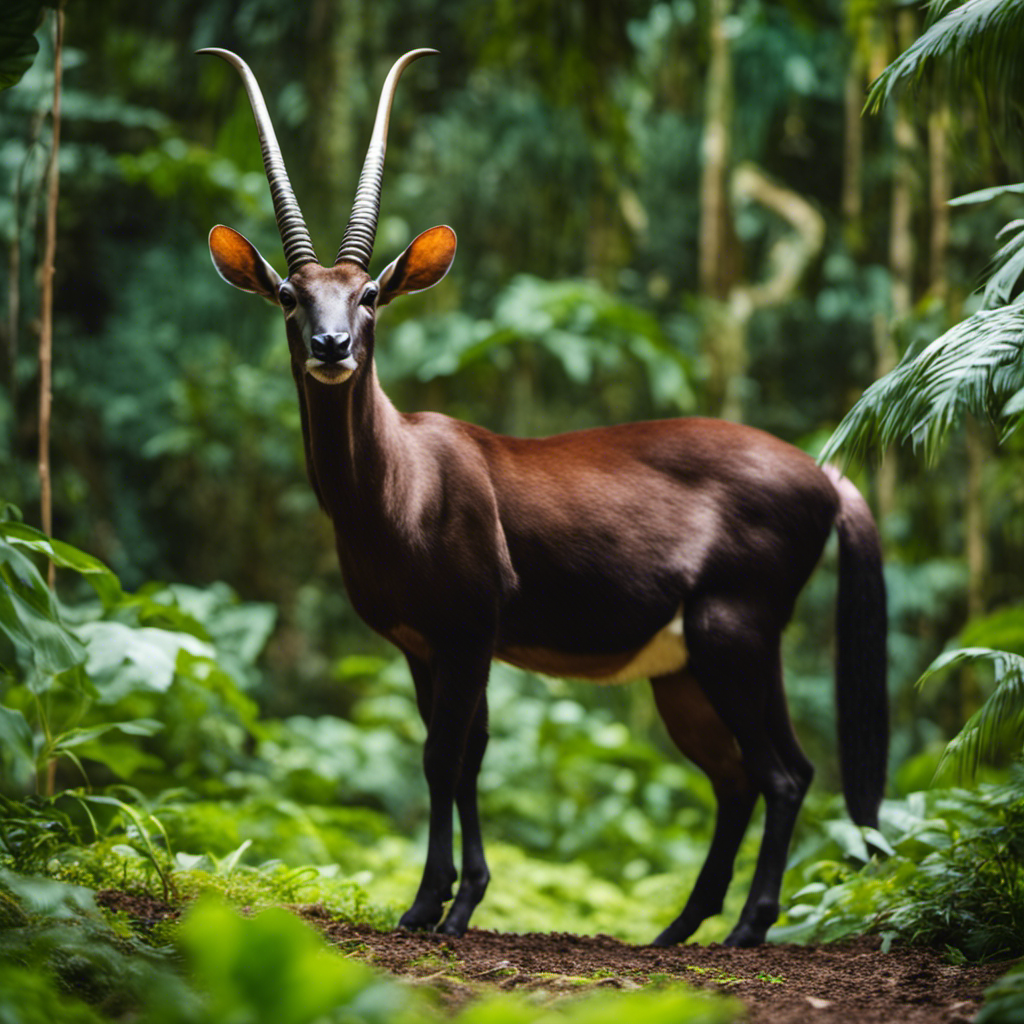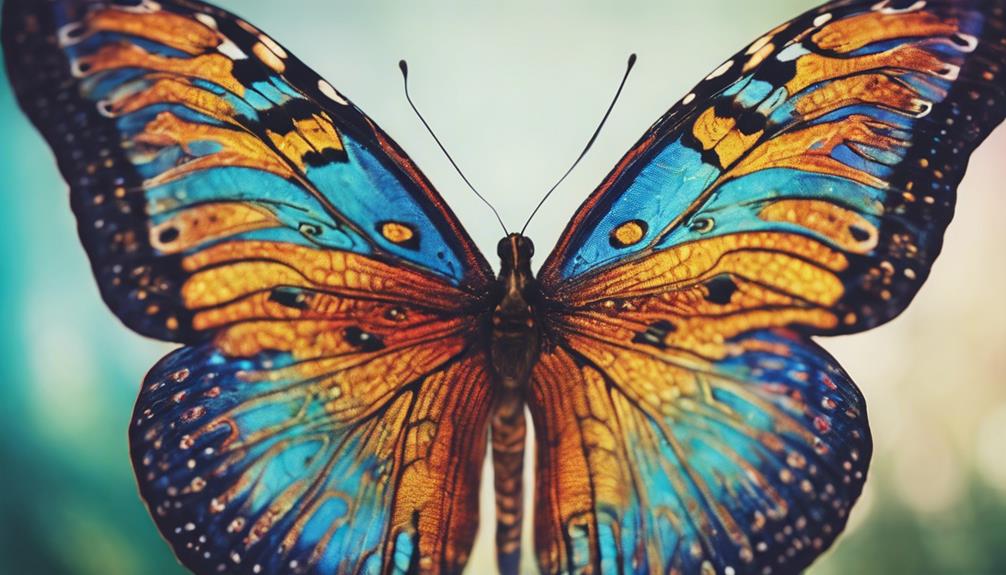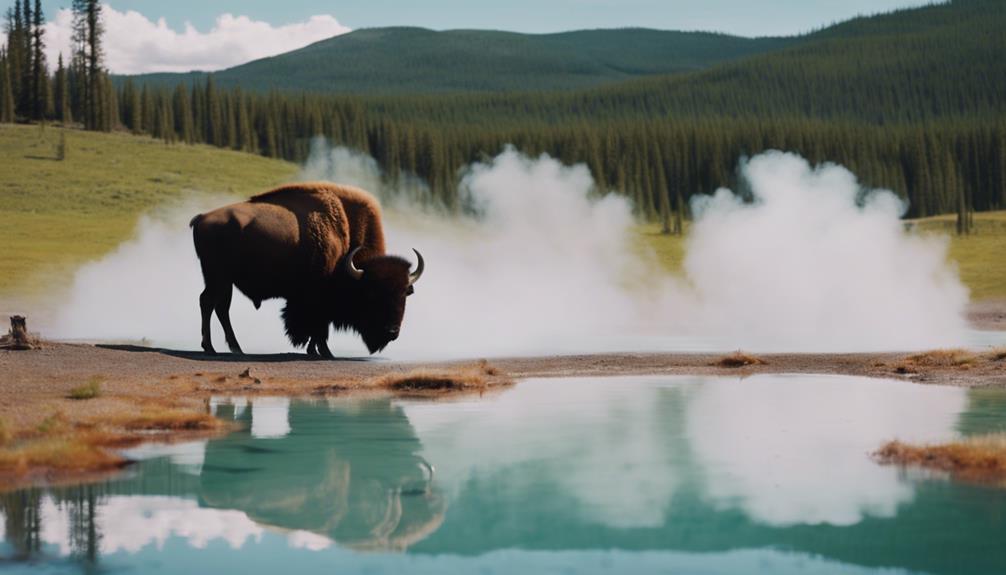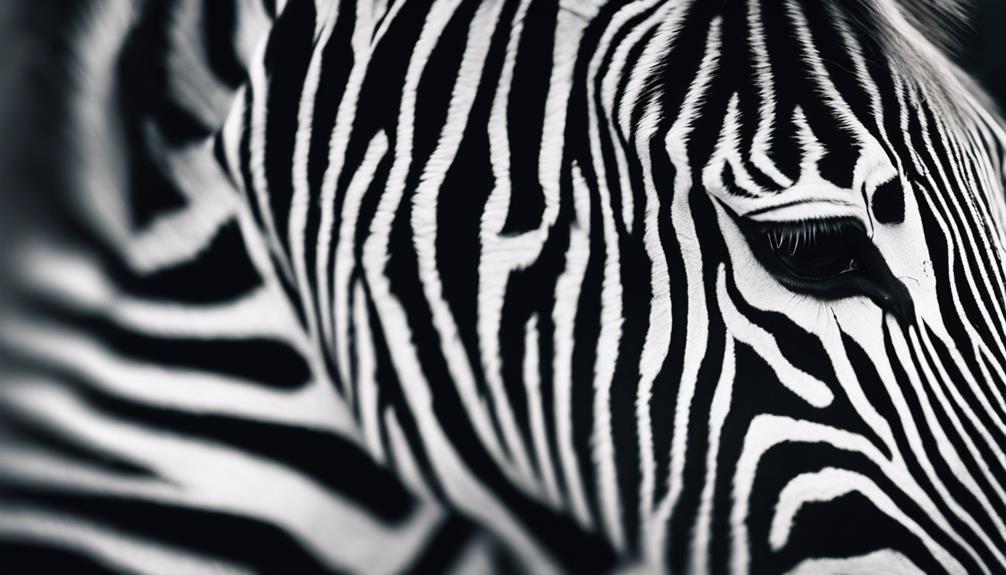Hey there! Ready to dive into some mind-blowing facts about the incredible saola? Hold on tight because we’re about to take you on a wild adventure through their mysterious world.
Get ready to be amazed by their unique physical characteristics, learn about their endangered status and the heroic efforts being made to save them, and uncover the secrets of their elusive behavior and habitat.
But that’s not all – we’ll also explore the cultural significance and mythology surrounding these magnificent creatures.
So buckle up and let’s go!
Key Takeaways
- Saola, also known as the ‘Asian unicorn’, was discovered in 1992 and has since provided valuable insights into biodiversity and ecological balance.
- The saola’s unique physical characteristics, such as long straight horns, striking white markings on the face, slender body, and strong legs, showcase its ability to survive in challenging environments.
- The saola is critically endangered, with less than 100 individuals remaining, due to rapid habitat loss and illegal hunting. Conservation efforts include international collaboration, anti-poaching measures, and captive breeding programs.
- The saola’s elusive behavior and habitat in dense forests of Vietnam and Laos make population and behavior data scarce. Additionally, the saola holds cultural significance in Vietnamese and Laotian folklore, believed to possess mystical powers and associated with luck and protection.
Origin and Discovery
Did you know that the saola was first discovered in 1992 by a team of scientists? This remarkable creature, also known as the ‘Asian unicorn,’ has captivated researchers around the world.
Saola research has yielded valuable insights into the biodiversity and ecological balance of its habitat. The scientific significance of this discovery cannot be overstated. Through studying saolas, scientists have gained a deeper understanding of the delicate interconnections between different species and their environment.
This knowledge is crucial for preserving the fragile ecosystems that saolas call home. By unraveling the mysteries surrounding these elusive creatures, we can contribute to their conservation and protect our planet’s rich biodiversity.
Join us on this journey of exploration and become part of a community dedicated to safeguarding these rare and magnificent beings. Together, we can ensure their place in our shared natural heritage.
Unique Physical Characteristics
Take a look at the saola’s distinct physical characteristics, such as its long, straight horns and striking white markings on its face. These remarkable features are not just aesthetically pleasing; they have important physical adaptations that contribute to the saola’s evolutionary significance.
The saola’s long horns, measuring up to 20 inches in length, are used for defense against predators and territorial disputes. Its slender body allows for swift movement through dense forests, while its strong legs enable agile leaps over obstacles. Additionally, the striking white markings on its face help camouflage it in its natural habitat.
These physical adaptations showcase the saola’s ability to adapt and survive in challenging environments. As we marvel at these unique characteristics, we find a sense of belonging within nature’s wondrous creations.
Endangered Status and Conservation Efforts
Learn about the saola’s endangered status and the ongoing conservation efforts to protect this remarkable species.
The saola, also known as the ‘Asian unicorn,’ is one of the most critically endangered species on our planet. With a population estimated at less than 100 individuals, urgent action is needed to ensure their survival.
Here are three key facts about the saola’s endangered status and conservation programs:
-
Rapid habitat loss: Deforestation and illegal hunting pose significant threats to the saola’s survival. Their forest homes are being destroyed at an alarming rate, leaving them with limited space to thrive.
-
International collaboration: Conservation organizations, governments, and local communities are working together to save the saola. These collaborative efforts aim to protect their habitats, strengthen anti-poaching measures, and raise awareness about their plight.
-
Captive breeding programs: To increase the saola population, captive breeding programs have been established in protected areas. These initiatives provide a safe environment for breeding and help reintroduce individuals into the wild.
Elusive Behavior and Habitat
The saola’s elusive behavior and habitat make it difficult for researchers to gather comprehensive data on their population and behavior. These magnificent creatures, also known as the ‘Asian unicorn,’ inhabit the dense forests of Vietnam and Laos.
With their unique adaptations, such as long, straight horns and striking white markings on their face, they seamlessly blend into their surroundings. Their secretive nature makes them masters of camouflage, allowing them to evade detection by humans. As a result, little is known about their social structure, reproductive habits, or even accurate estimates of their population size.
However, despite this elusiveness, efforts are being made to study and conserve the saola’s habitat in order to ensure its survival for future generations. By protecting these extraordinary creatures and preserving their natural environment, we can create a world where both saolas and humans can coexist harmoniously.
Together, we can be the guardians of this mysterious species and its precious habitat.
Cultural Significance and Mythology
In Vietnamese and Laotian folklore, the saola is believed to possess mystical powers and is often associated with luck and protection. The cultural beliefs surrounding the saola highlight its spiritual connections and deep-rooted significance in the lives of the people.
Here are three fascinating aspects of the saola’s cultural significance:
-
Guardian Spirit: The saola is considered a guardian spirit, protecting individuals from evil spirits and bringing good fortune to their lives.
-
Ritualistic Ceremonies: In certain communities, rituals are performed to honor the saola and seek its blessings for a bountiful harvest or successful endeavors.
-
Symbol of Unity: The saola holds symbolic value as a representation of unity among different tribes and communities, emphasizing the importance of cooperation and harmony.
The spiritual connections between humans and this enigmatic creature reflect a desire for belonging within these cultures, fostering a sense of identity, tradition, and shared belief systems.
Frequently Asked Questions
What Is the Average Lifespan of a Saola in the Wild?
The average lifespan of a saola in the wild is around 8-10 years. They communicate with each other using scent marking and vocalizations, creating a strong sense of community within their herd.
How Do Saolas Communicate With Each Other?
Saolas communicate with each other through unique vocalizations and other communication techniques. These methods allow them to connect and interact, creating a sense of belonging within their social groups.
Are There Any Known Predators of Saolas?
There are some known predators of saolas, such as tigers and leopards. However, due to their elusive nature and the conservation efforts in place, these majestic creatures have a chance to thrive in their natural habitat.
How Many Saolas Are Estimated to Be Left in the Wild?
There are only an estimated few hundred saolas left in the wild. But don’t worry, conservation efforts are underway to protect and increase their population. Together, we can ensure a brighter future for these magnificent creatures.
What Is the Main Threat to the Saola Population?
Climate change and habitat loss pose a significant threat to the saola population. These factors disrupt their natural environment, making it harder for them to survive. It is crucial that we take action to protect their habitats and combat climate change.
Conclusion
Congratulations! You have now journeyed through the captivating world of saolas, discovering their fascinating origin, physical characteristics, endangered status, elusive behavior, and cultural significance.
As you reflect on this incredible adventure, imagine a delicate saola gracefully navigating its dense forest home like a mystical dancer twirling through a moonlit stage.
Just as the saola’s existence hangs in the balance, so too does our role as guardians of this precious planet. Let us be inspired by these magnificent creatures and unite in our efforts to protect and preserve their extraordinary habitat for generations to come.
Together, we can create a future where saolas continue to inspire awe and wonder in all who encounter them.





